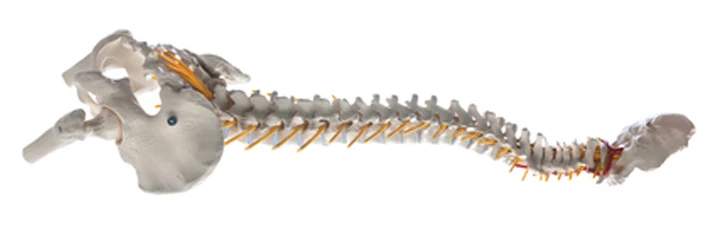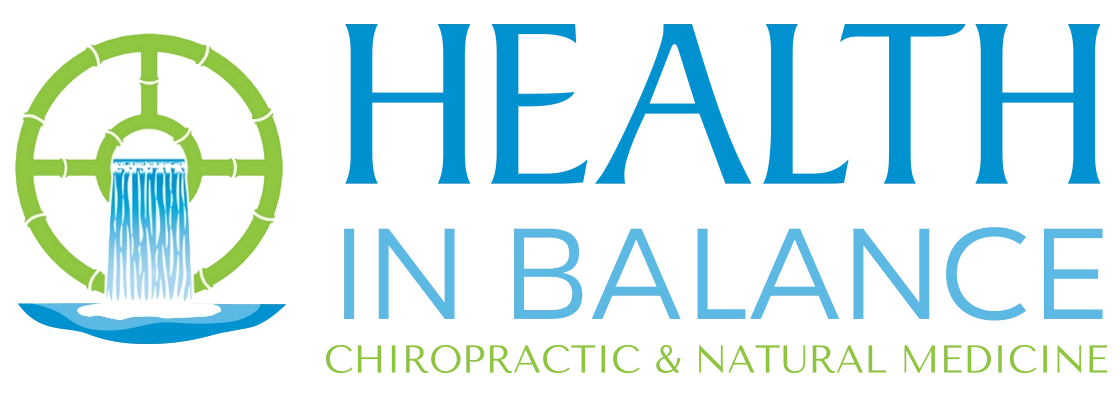Structural and Postural Research in Laguna Beach CA

The Importance of Posture
Posture quotes brought to you by your Laguna Beach CA chiropractors.
“Deviations in the body’s center of gravity caused poor posture, which resulted in intestinal problems, hemorrhoids, varicose veins, osteoporosis, hip and foot deformities, poor health, decreased quality of life, and shortened life span.” (Freeman, 1957)
“For every inch of Forward Head Posture, it can increase the weight of the head on the spine by an additional 10 pounds.” (Kapandji, 1974)
“Loss of the cervical curve stretches the spinal cord 5-7 cm and causes disease.” - Alf Breig, MD, Neurosurgeon (Nobel Prize Recipient)
“Forward head posture LEADS to long term muscle strain, disc herniations, arthritis, and pinched nerves” - Mayo Clinic, Nov 3rd, 2000
“Aging and degenerative (arthritic) changes are not synonymous” - Harry F. Farfan, M.D., M.Sc., C.M., F.R.C.S., 1998
Dr. Roger Sperry, 1980 Nobel Prize recipient for brain research, has demonstrated that ninety percent (90%) of the energy output of the brain is used in relating the physical body to gravity. Only ten percent (10%) has to do with thinking, metabolism, and healing. (In normal anatomical position).
*So when you have forward head posture your brain will rob energy from your thinking, metabolisms, and healing because it will need more than the normal 90% energy output to deal with it.
Where does the brain get its power?
“90% of the stimulation and nutrition to the brain is generated by the movement of the spine. This would be analogous to a windmill generating electricity.” Source: Dr. Roger Sperry, M.D., Nobel Prize Recipient for BRAIN RESEARCH
The Negative Effects of Postural Distortions
POSTURAL DISTORTIONS...
- Cause Pain (Panjabi, 2005)
- “Abnormal mechanics of the spinal column has been hypothesized to lead to back pain via nociceptive sensors.”
- Compromise Immune Function (Muller & Giles, 2005).
- Found that Chronic mechanical spinal pain syndromes compromise immune function.
- Negatively affect central neural processing (Haavik- Taylor & Murphy, 2007) (Korr, 1976)
- “an alteration in a segment or area of the spine negatively affects nervous system function” (Korr, 1976)
- Negative effects include: (Haavik- Taylor & Murphy, 2007)
- Spinal dysfunction will alter afferent input to the central nervous system
- Altered afferent input to the central nervous system leads to plastic changes
- Neural plastic changes take place both following increased and decreased afferent input
- Altered afferent input from joints leads to both inhibition and facilitation of neural input to related muscles
- Both painful and painless joint dysfunction will inhibit surrounding muscles
- Affect Cognitive Function (Cohen et al., 2016)
- In this study, upright posture and mobility were associated with different cognitive processes. Adults with proper posture showed better memory. The decreased cognitive function of older adults was associated with their tendency to carry their heads and necks forward relative to torso.
- Increase mortality (Kado, Huang, Karlamangla, Barrett-Connor, & Greendale, 2004)
- “participants with hyperkyphotic posture had a significant 2.4 times greater rate of death.”
- “even at this mild degree of hyperkyphotic posture, there was a definite greater rate of earlier mortality”
- Affect Emotions (Rosário, Diógenes, Mattei, & Leite, 2016)
- This study found a direct correlation between emotions and posture, stating that posture affects emotions and emotions also affect posture. An expansive posture was associated with emotions of happiness, success, confidence, and optimism. While there was an increased amount of head protrusion, shoulder elevation, forward shoulder rolling, and knee hyperextension among patients who were angry.
- Decrease Proprioception Function (Yong, Lee, & Lee, 2016)
REDUCED CURVE IN THE NECK LEADS TO...
- Acute and Chronic Pain (Grob, Frauenfelder, & Mannion, 2007).
- Neck and Back Pain (Kai et al., 1998)
- Cervical kyphosis (segmental or total) leads to total spinal malalignment, rounding of the shoulders, headaches, neck pain, scapular pain, and possibly even lower back pain.
- Decrease blood flow to the brain (Bulut et al., 2016)
- Headaches (Nagasawa et al. 1993) (Vernon et al., 1992) (Braff & Rosner, 1975)
- Arthritis in the spine (Degenerative disc disease) (Okada et al., 2009) (Faldini et al., 2011)
- Restriction of Vital Respiratory Function (Han, 2016)
REDUCED CURVE IN THE LOW BACK LEADS TO...
- Lower back pain (Adams et al., 1999)
- The possession of a long, flat, or stiff back substantially increases the risk of serious low back pain, and it is difficult to explain this in other than mechanical terms
- Knee pain (Tsuji et. al., 2002)
- Higher Risk of Vertebral Fracture (Kobayashi, 2008)
- Higher Risk of Developing GERD (acid reflux disease) (Imagama et al., 2012)
Restoring Posture At Health In Balance
THE BENEFITS OF CHIROPRACTIC BIOPHYSICS AND TRACTION
- Traction Restores Neck Curve (Harrison et al., 2002) (Harrison et al., 2003)
- Findings:(Harrison et al., 2002)
- Increased curve average of 14.2 degrees after 35 visits of traction treatment.
- 15.5 months follow up without treatment found that average loss was 3.7 degrees- not much loss for having no treatment
- Findings:(Harrison et al., 2003)
- Improvement of 17.9 C2-C7 Lordosis after an average of 38 treatments
- Findings:(Harrison et al., 2002)
- Traction Restores Back Curve (Keller, Colloca, Harrison, Harrison, & Janik, 2005) (Harrision, Janik, Troyanovich, Harrison, & Colloca, 1997)
- Traction Restores and Straightens Scoliosis (Sponseller et al., 2008)
- Stretching and strengthening exercises improve forward head posture (Lee & Lee, 2016)
- This research study found that stretching and strengthening protocols were effective in reducing forward head posture. Postural rehabilitation was found to be beneficial in both structural correction and improvement of dynamic balance ability.
POSTURAL RESTORATION & HIGH BLOOD PRESSURE
Postural Restoration Beneficial for High Blood Pressure Patients
- Study 1: Atlas vertebra realignment and achievement of arterial pressure goal in hypertensive patients: a pilot study. (Bakris et al., 2007)
- Findings: “We conclude that restoration of Atlas alignment is associated with marked and sustained reductions in BP similar to the use of two-drug combination therapy.”
- Study 2: The intermedius nucleus of the medulla: A potential site for the integration of cervical information and the generation of autonomic responses. (Edwards, S. Deuchars, & J Deuchars, 2009)
- Findings: “Changes in the positioning of the head relative to the trunk, or sensory information arising from the neck musculature, have been clinically implicated in the control of heart rate and blood pressure.”
Access to All of our Compiled Research
To get access to ALL of our compiled research, request the password HERE
REFERENCES
Adams MA, et al. (1999). Personal risk factor for first time low back pain. Spine, 24, 2497-2505.
Bakris, G., Dickholtz, Sr. M., Meyer, P.M., Kravitz, G., Avery, E., Miller, M., Brown, J., Woodfield, C., & Bell, B. (2007). Atlas vertebra realignment and achievement of arterial pressure goal in hypertensive patients: a pilot study. Journal of Human Hypertension. March 2 (advanced e-publication)
Braff, M.M., Rosner, S. (1975).Trauma of the cervical spine as a cause of chronic headache. J Trauma 15, 441-446.
Bulut MD, et al (2016). Vertebral Artery Hemodynamics in Patient with Loss of Cervical Lordosis. Medical Science Monitor, 15(22), 495-500
Cohen, R. et al. (2016) Mobility and Upright Posture Are Associated with Different Aspects of Cognition in Older Adults. Frontiers in Aging Neuroscience 8(257).
Edwards I. J., Deuchars S. A., & Deuchars J. (2009). The intermedius nucleus of the medulla: A potential site for the integration of cervical information and the generation of autonomic responses. Journal of Chemical Neuroanatomy, 38, 166-175.
Faldini, C. et. al. (2011). Sagittal Segmental Alignment as Predictor of Adjacent-Level Degeneration After a Cloward Procedure. Clin Orthop Relat Res, 469, 674-681
Freeman, J.T., (1957). Posture and the Aging and Aged Body, Journal of the American Medical Association, 165(7), pp 843-846.
Grob, D., Frauenfelder, H., Mannion, A.F. (2007). The association between cervical spine curvature and neck pain. European Spine Journal 16(5), 669–678.
Han, J. et al. (2016) Effects of forward head posture on forced vital capacity and respiratory muscles activity. Journal of Physical Therapy Science, 28(1) p. 128–131.
Harrison, D.D., Janik, T.J., Troyanovich, S.J., Harrison, D.E., & Colloca, C.J. (1997). Evaluations of the Assumptions Used to Derive an Ideal Normal Cervical Spine Model. Journal of Manipulative Physiological Therapeutics, 20(4), 246-256.
Harrison, D.E., Caiiet R, et al. (2002). A new 3-point bending traction method for restoring cervical lordosis and cervical manipulation: A non-randomized clinical controlled trial. Arch Phys Med Rehab, 83, 447-453
Harrison, D.E., et al (2003). Increasing the cervical lordosis with seated combined extension-compression and transverse load cervical traction with cervical manipulation: Non Randomized clinical control trial. Journal of Manipulative and Physiological Therapeutics, 26, 139-151.
Imagama, S., Hasegawa, Y., Wakao, N., Hirano, K, Hamajima, N, Ishiguro, N. (2012). Influence of lumbar kyphosis and back muscle strength on the symptoms of gastroesophageal reflux disease in middle-aged and elderly people. European Spine Journal, 21(11), 2149-57.
Kado et al. (2004). Hyperkyphotic Posture Predicts Mortality in Older Community-Dwelling Men and Women: A Prospective Study. Journal of the American Geriatrics Society, 52(10) 1662
Kai Y, et al. (1998). Traumatic thoracic outlet syndrome. Orthop Traumatol, 47, 1169-1171.
Kapandji, I. A. (1974). The Physiology of the Joints, vol. 3. Edinburg, Scotland: Churchill Livingstone.
Korr IM. (1976). The spinal cord as organizer of disease processes: some preliminary perspectives. The Journal of the American Osteopathic Association, 76(1): 35-45.
Keller, T.S., Colloca, C.J., Harrison, D.E., Harrison D.D., & Janik T.J. (2005). Morphological and Biomechanical Modeling of the Thoracoc-lumbar Spine: Implications for the Ideal Spine. Spine Journal, 5, 297-305.
Kobayashi, T. (2008). Flattening of sagittal curvature as a predictor of vertebral fracture. Osteoporos Int, 19, 65-69.
Lee, S. & Lee, J. (2016) Effects of strengthening and stretching exercises on the forward head posture. Journal of International Academy of Physical Therapy Research, 7(2) p.1046-1050.
Muller, R., & Giles, L.G.F (2005). Follow-Up of a Randomized Clinical Trial Assessing the Efficacy of Medication, Acupuncture, and Spinal Manipulation for Chronic Mechanical Spinal Pain Syndromes. Journal of Manipulative and Physiological Therapeutics, 28(1).
Nagasawa A, et al. (1993). Rontgenographic findings of the cervical spine in tension-type headaches. Headache, 33, 90-95
Okada et al. (2009). Does the sagittal alignment of the cervical spine have an impact on disk degeneration? Minimum 10-year follow-up of asymptomatic volunteers. European Spine Journal, 18(11), 1644-1651.
Panjabi, M.M. (2005). A hypothesis of chronic back pain: ligament subfailure injuries lead to muscle control dysfunction. European Spine Journal.
Rosário, J. L., Diógenes, M. S. B., Mattei, R., & Leite, J. R. (2016). Angry posture. Journal of Bodywork and Movement Therapies.
Sponseller, P.D., Takenaga, R.K., Newton, P., Boachie, O., Flynn, J., Letko, L., Betz, R., Bridwell, K., Gupta, M., Marks, M., & Bastrom, T. (2008). The use of traction in the treatment of severe spinal deformity. Spine (Phila Pa 1976), 33(21), 2305-9.
Tsuji T et al. (2002). Knee-spine syndrome: correlation between sacral inclination and patellofemoral joint pain. J Orthop Sci 7, 519-523
Vernon, H. et al (1992). Cervicogenic dysfunction in muscle contraction headache and migraine; A descriptive study. Journal of Manipulative Physiological Therapy, 15418-29.
Yong, M. S., Lee, H. Y., & Lee, M. Y. (2016). Correlation between head posture and proprioceptive function in the cervical region. Journal of physical therapy science, 28(3), 857.
OFFICE HOURS
Monday
7:00am - 7:00pm
Tuesday
7:00am - 7:00pm
Wednesday
7:00am - 7:00pm
Thursday
7:00am - 7:00pm
Friday
7:00am - 2:00pm
Saturday
8:00am - 12:00pm
Monday
7:00am - 11:00am
Wednesday
3:00pm - 6:30pm
Health in Balance
330 Park Ave #3
Laguna Beach, CA 92651
P: (949) 497-2553
F: (949) 497-5273

